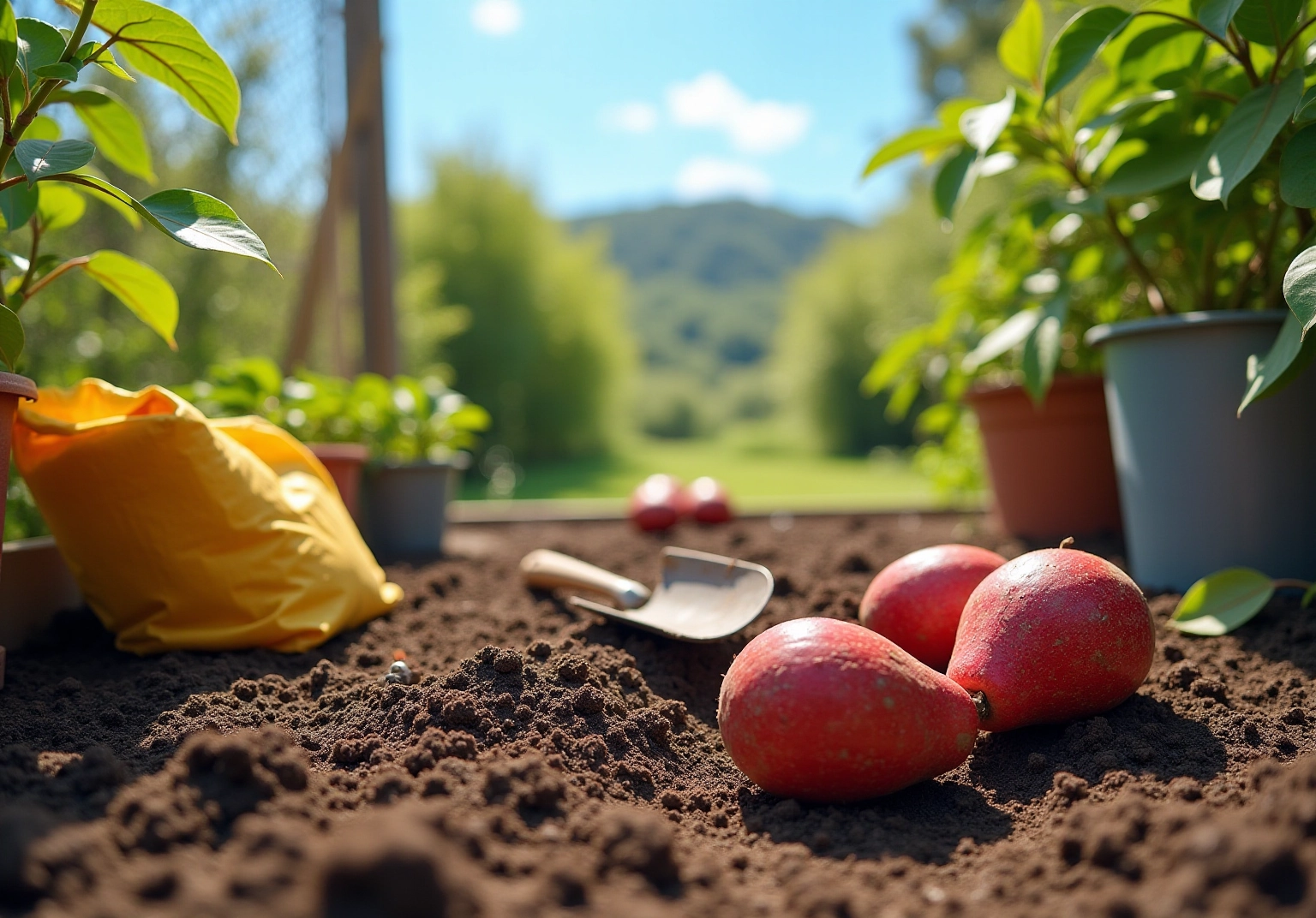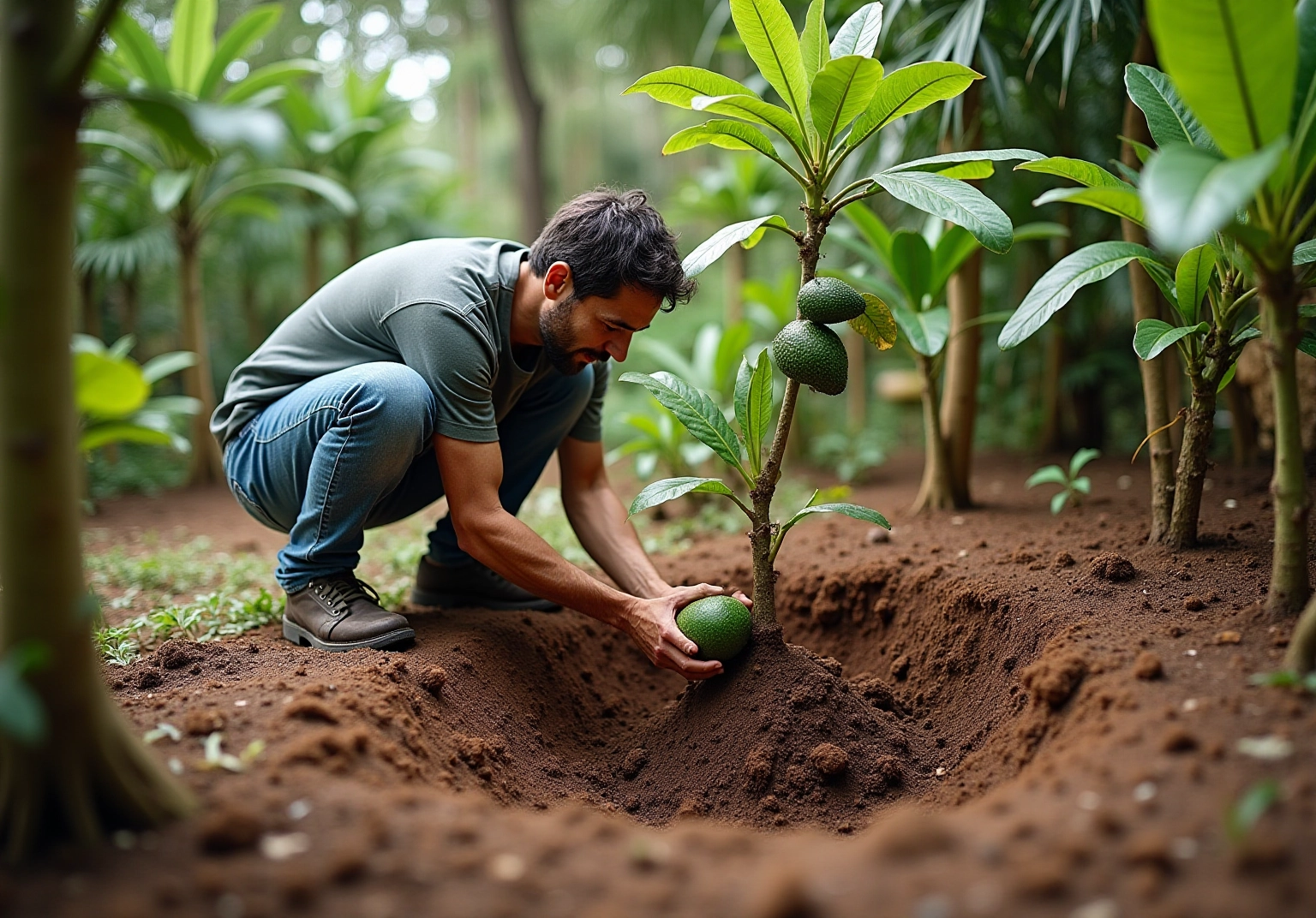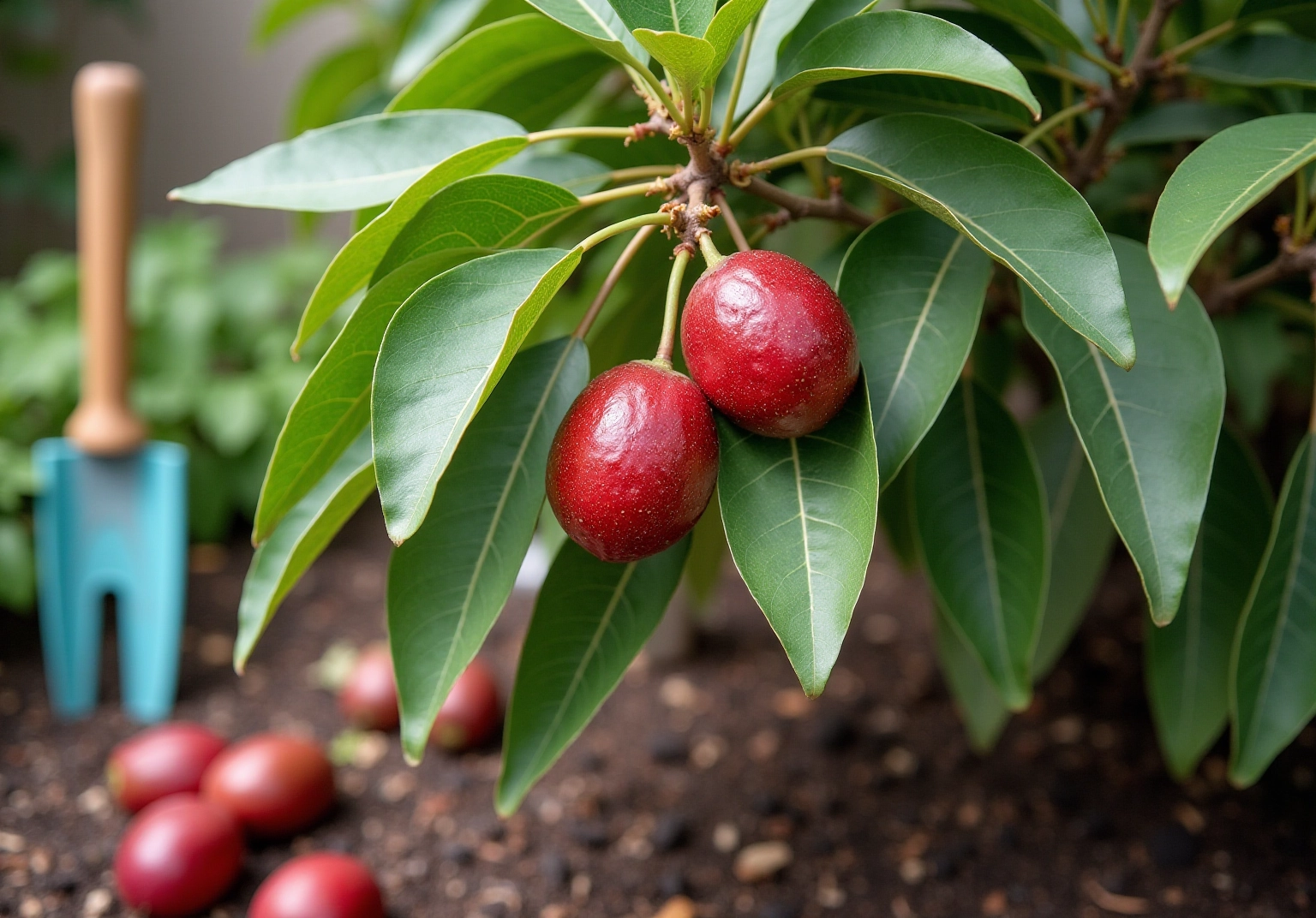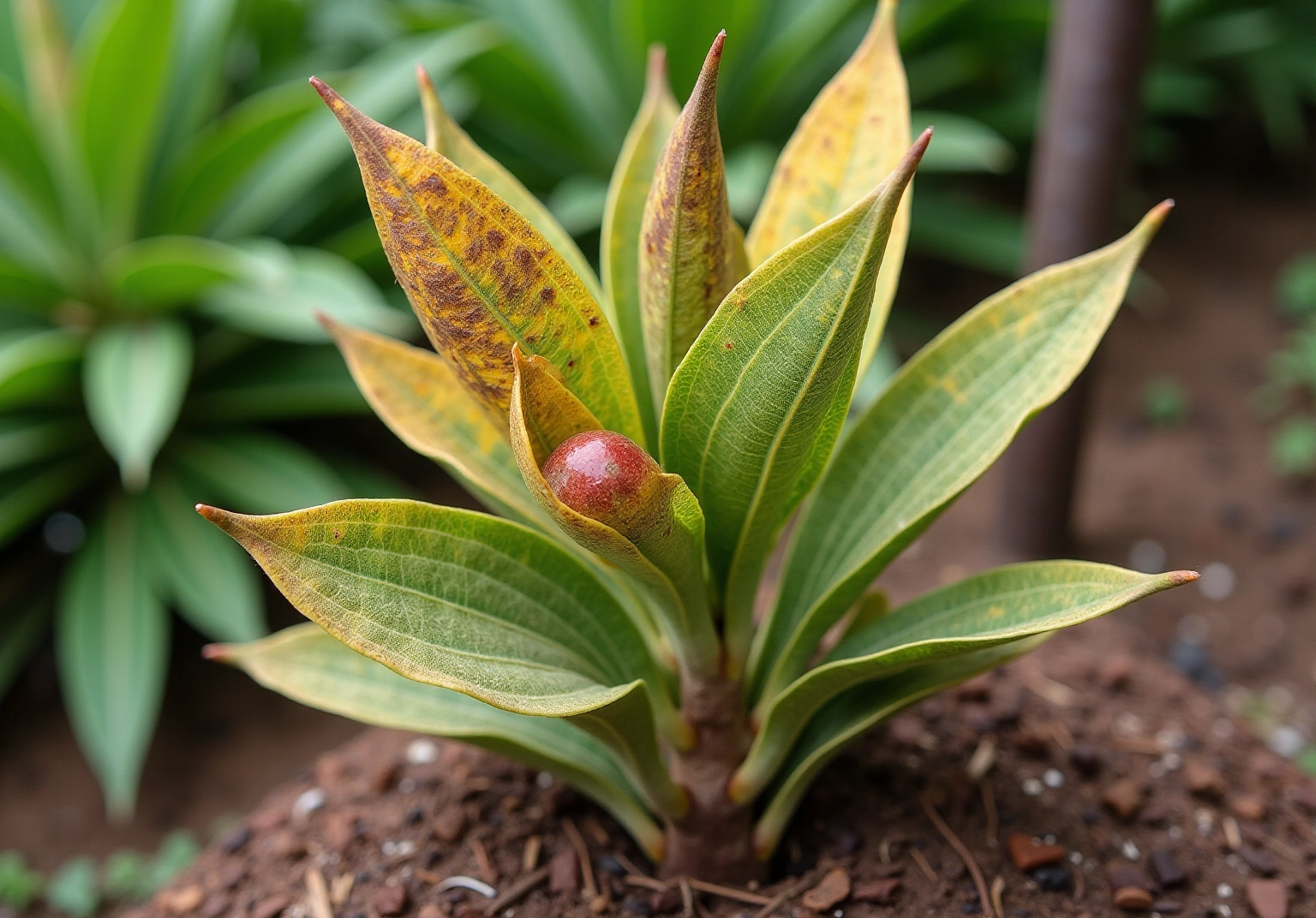Mastering the Red Avocado Variety: Essential Steps for Success
Share
The allure of the red avocado variety is undeniable, captivating both gardeners and food enthusiasts with its unique flavor and vibrant hue. Successfully cultivating this tropical gem requires more than just a green thumb; it demands a strategic approach to planting, nurturing, and troubleshooting. To ensure these trees thrive and produce a bountiful harvest, several essential steps must be taken. This guide delves into the intricacies of growing red avocados, offering invaluable insights that promise to transform any garden into a flourishing oasis filled with this exquisite fruit.
🥑 Ready to grow red avocado in your garden?
Explore the red avocado tree at Everglades Farm.
Prepare Your Garden for Red Avocado Planting
-
Choose the Right Location: Select a spot that receives full sunlight for at least 6-8 hours a day. The red avocado variety thrives in warm climates, so ensure the area is sheltered from strong winds and frost.
-
Ground Preparation: Avocado trees favor well-draining soil. Test the ground pH; it should be between 6.0 and 6.5 for optimal growth. If necessary, amend the soil with organic materials such as compost or peat moss to enhance drainage and nutrient content. Signs of inadequate soil conditions include yellowing leaves and stunted growth, indicating nutrient deficiencies or root rot. To improve your soil quality, consider utilizing Everglades Farm's professional-grade fertilizers, which are rich in vital nutrients to promote healthy plant growth.
-
Create a Mound: If your soil retains too much water, consider planting the avocado on a mound. This practice aids in drainage and prevents plant decay.
-
Clear the Area: Remove any weeds, rocks, or debris from the planting area to reduce competition for nutrients and water.
-
Water the Soil: Before planting, water the area thoroughly to ensure the soil is moist but not waterlogged. This helps the roots establish more easily. Furthermore, fertilize the plants in late winter, midsummer, and early fall with Everglades Farm's fertilizers to encourage vigorous growth. Discover Everglades Farm's Fast-Growing Trees collection today for quick-yield tropical greenery that can enhance your planting efforts.
Read: Dwarf Avocado Trees: The Perfect Small-Space Avocado Tree for Your Garden

Plant Red Avocado Trees: Step-by-Step Instructions
-
Dig the hole to create an opening that is twice as wide and the same depth as the base of the red avocado variety plant, typically around 3 to 5 feet in diameter. This allows the roots to spread easily and establishes a strong foundation. Avocado plants flourish in ground temperatures ranging from 68 to 77°F (20 to 25°C), so ensure the planting location satisfies these requirements. For optimal growth, consider planting alongside soursop plants, which can benefit from similar soil conditions and care.
-
Remove the Tree from the Container: Carefully take the tree out of its container, ensuring minimal harm to the base. If the plants are tightly bound, gently loosen them to promote growth. This method is also advantageous when planting passion fruit vines, as robust underground systems are essential for both varieties of plants.
-
Position the Plant in the Opening: Align the plant in the opening, ensuring that the top of the ball of roots is even with the surrounding earth. This positioning prevents water from pooling around the trunk, which can lead to rot. When planting soursop trees, similar care in ball placement will help guarantee their success as well.
-
Backfill the Hole: Refill the hole with the original earth, packing it down lightly to eliminate air pockets. Moisten the soil while you refill it to aid in settling and supply hydration to the plants. This method is effective for both the red avocado variety and soursop plants, promoting their healthy establishment.
-
Water Generously: After planting, provide the plant with a deep watering to aid in establishing its foundation. Keep damp earth conditions for the initial weeks, avoiding sogginess to prevent root decay. This is especially crucial for soursop plants, which flourish in well-drained earth.
-
Mulch: Apply a layer of mulch around the base of the plant to retain moisture and suppress weeds, ensuring it is kept a few inches away from the trunk to prevent decay. This method is also suggested for passion fruit vines, as it aids in retaining moisture and temperature in the ground.
Integrating these steps will result in a thriving planting and robust development of your red fruit-bearing plant, enabling you to savor the rewards of your efforts while also taking into account the advantages of cultivating soursop and passion fruit in your tropical garden.

Maintain Your Red Avocado Trees: Watering, Fertilizing, and Pruning
-
Watering: To ensure the health of your red fruit plants, deeply irrigate them once a week, allowing the top few inches of soil to dry out between waterings. Mature plants require approximately 20 gallons of water each day during the irrigation season, with notable seasonal variations, such as 121 liters per day in autumn. Adjust your watering frequency based on rainfall and temperature to maintain optimal moisture levels.
-
Fertilizing: In early spring and late summer, apply a balanced fertilizer specifically designed for this fruit. Aim for an annual nitrogen application of about 1/2 to 1 pound, adhering to the manufacturer's guidelines for application rates. Research indicates that nitrogen fertilization can significantly enhance yield and fruit size, with effective levels ranging from 250 g to 500 g per plant annually, underscoring its importance in plant care.
-
Pruning: Conduct yearly pruning to remove dead or crossing branches and to shape the plant. This practice not only promotes improved air circulation and sunlight penetration—both essential for optimal fruit production—but also aids in preventing pest infestations, as highlighted by experts in the field.
-
Observe for Pests: Regularly inspect your plants for pests such as thrips or mealybugs. If detected, promptly address any infestations using organic insecticides or neem oil to protect your plants and encourage healthy growth. It is crucial to act quickly, as pests like thrips can lead to fruit drop.
-
Mulching: Maintain a 2-3 inch layer of mulch around the base of the plant, replenishing it as needed. Ensure that mulch is applied about 6-8 inches away from the trunk to help retain soil moisture, suppress weeds, and improve soil quality, thereby contributing to the overall vitality of your plants.

Troubleshoot Common Issues in Growing Red Avocados
-
Yellowing Leaves: Yellowing leaves often indicate nutrient deficiencies, particularly in nitrogen, phosphorus, and potassium. To address this issue, apply a balanced fertilizer specifically formulated for avocado plants, ensuring adherence to the recommended application rates. Regular observation of the plant’s growth will help assess the treatment's effectiveness. Additionally, applying mulch around the base of the plant can help retain moisture and suppress weeds, further promoting healthy growth.
-
Wilting: Wilting in avocado trees can result from either overwatering or underwatering. To resolve this, check the moisture levels in the soil. If the ground feels overly saturated, reduce the frequency of watering. Conversely, if the soil is dry, increase watering to restore the moisture balance.
-
Poor Fruit Set: A plant that flowers but does not produce fruit may be facing insufficient pollination or nutrient deficiencies. To improve pollination, consider planting another fruit variety nearby, as cross-pollination can significantly enhance fruit set.
-
Pest Infestations: If pests are detected on your fruit plants, it is crucial to address them promptly with organic insecticides. Regular monitoring of your plants will aid in catching infestations early, minimizing damage and ensuring healthy growth.
-
Root Rot: Root rot is a common issue in fruit-bearing plants, often caused by inadequate drainage. To prevent this, ensure that your planting area has proper drainage. If root rot is suspected, remove the affected plant and enhance soil drainage before replanting to avoid recurrence.
For further assistance, refer to the comprehensive FAQ section available, which can provide additional support and information on caring for your avocado trees.

Conclusion
Mastering the cultivation of the red avocado variety is a rewarding endeavor that requires careful planning, diligent maintenance, and proactive troubleshooting. By following the outlined steps—from selecting the ideal planting location to implementing effective watering and fertilization strategies—success in growing this unique fruit is attainable. Emphasizing proper soil preparation, consistent care, and pest management underlines the importance of a holistic approach to gardening.
Key insights discussed include:
- The necessity of well-draining soil
- The significance of regular watering and fertilizing
- The benefits of annual pruning
Understanding common challenges, such as nutrient deficiencies and pest infestations, equips gardeners with the knowledge to address issues promptly, ensuring healthy growth and bountiful harvests. Integrating these practices not only fosters the vitality of red avocado trees but also enhances the overall productivity of tropical gardens.
Ultimately, embracing the art of growing red avocados invites enthusiasts to engage with nature and enjoy the fruits of their labor. By implementing the strategies presented, gardeners can cultivate a thriving environment that yields delicious avocados while contributing to sustainable practices. The journey of nurturing these remarkable trees is not solely about the harvest; it also encompasses the joy of gardening and the benefits it brings to both the individual and the community.
Grow Your Own Delicious Red Avocados Today!
Start your gardening journey with Everglades Farm and enjoy the satisfaction of homegrown tropical fruits.
Frequently Asked Questions
What is the ideal location for planting red avocado trees?
The ideal location for planting red avocado trees is a spot that receives full sunlight for at least 6-8 hours a day, is sheltered from strong winds, and is protected from frost.
How should I prepare the ground for red avocado planting?
The ground should be well-draining, with a pH level between 6.0 and 6.5 for optimal growth. You may need to amend the soil with organic materials like compost or peat moss to improve drainage and nutrient content.
What are the signs of inadequate soil conditions for avocado trees?
Signs of inadequate soil conditions include yellowing leaves and stunted growth, which indicate nutrient deficiencies or root rot.
What should I do if my soil retains too much water?
If your soil retains too much water, consider planting the avocado on a mound to aid in drainage and prevent plant decay.
How can I prepare the planting area before planting red avocado trees?
Clear the area of any weeds, rocks, or debris to reduce competition for nutrients and water.
Should I water the soil before planting?
Yes, you should water the soil thoroughly before planting to ensure it is moist but not waterlogged, which helps the roots establish more easily.
When should I fertilize my red avocado plants?
You should fertilize the plants in late winter, midsummer, and early fall using fertilizers rich in nutrients to encourage vigorous growth.


